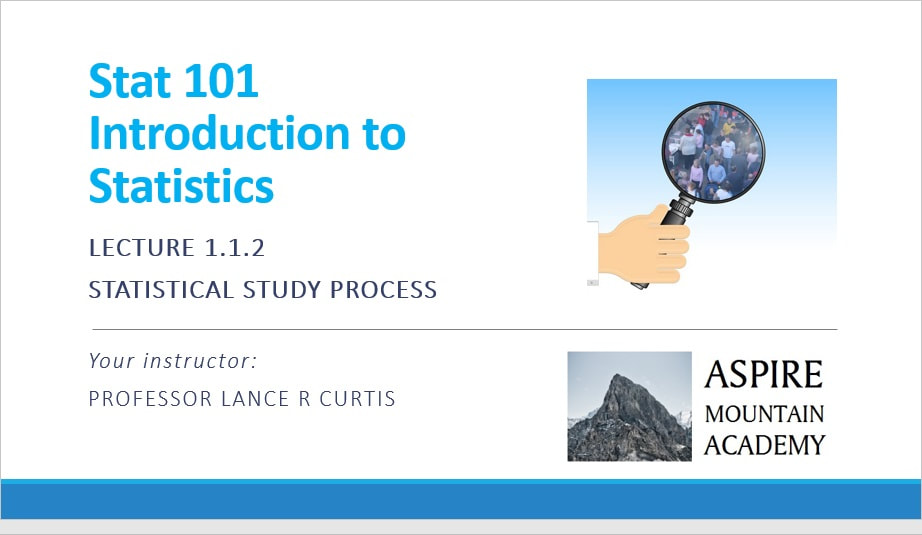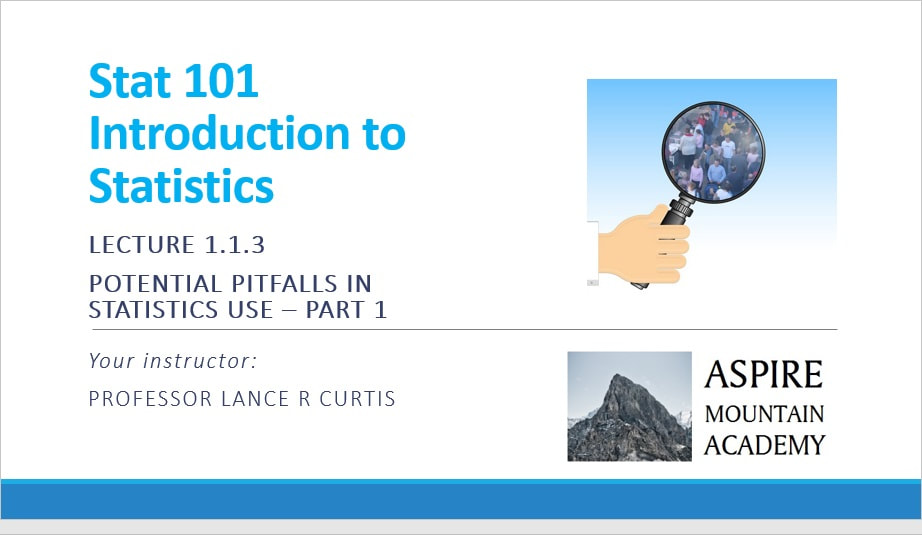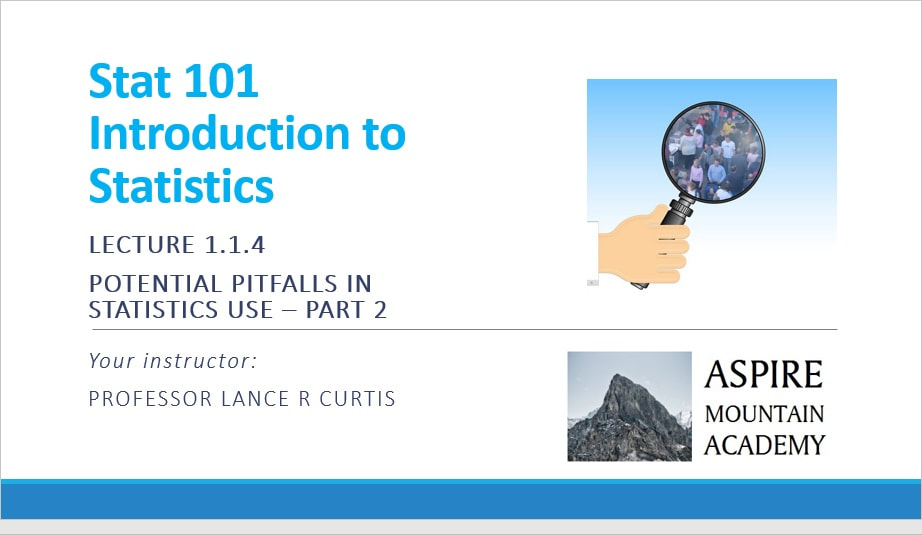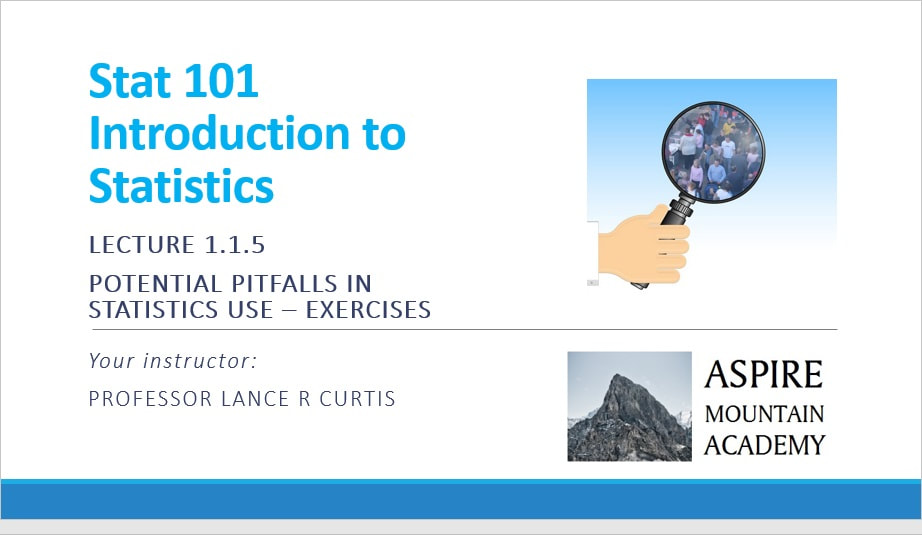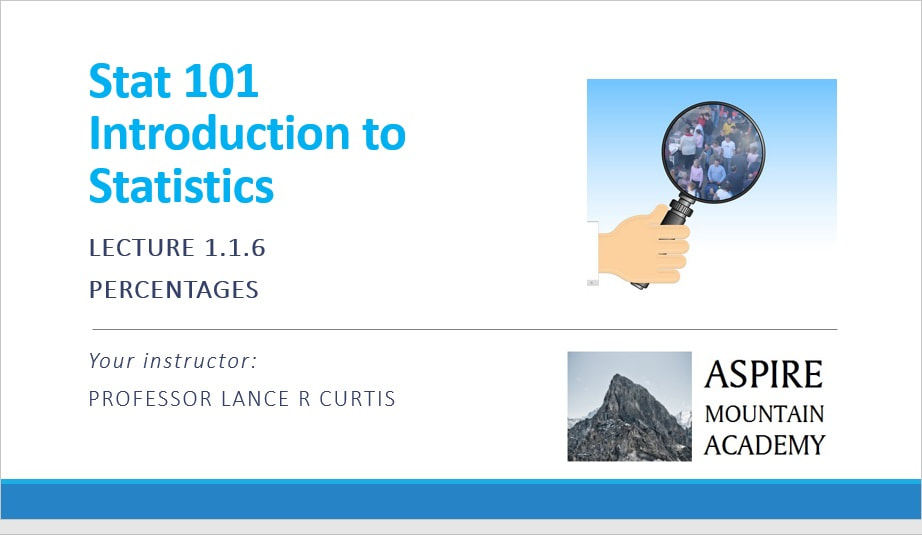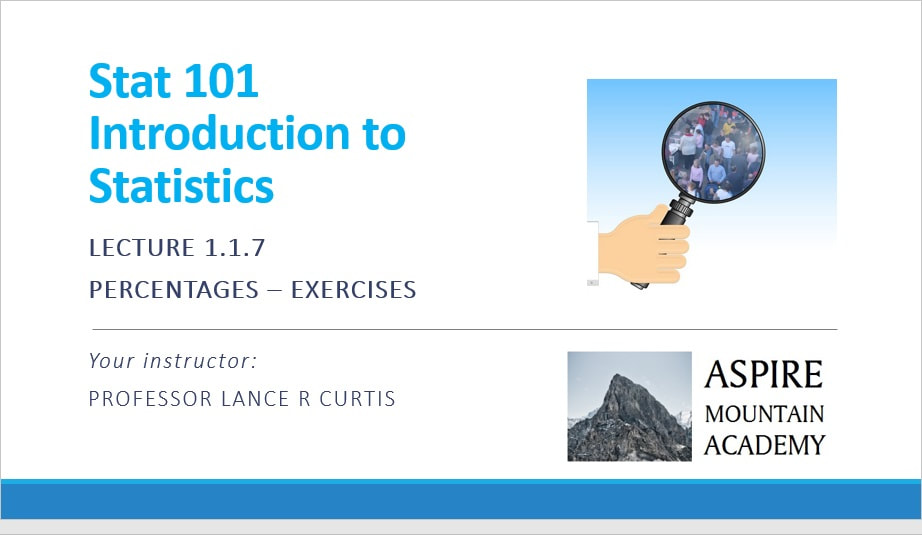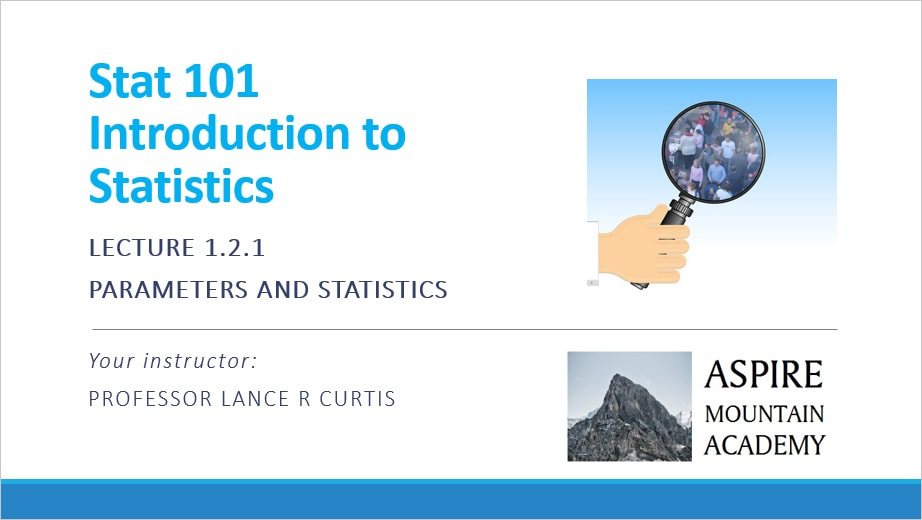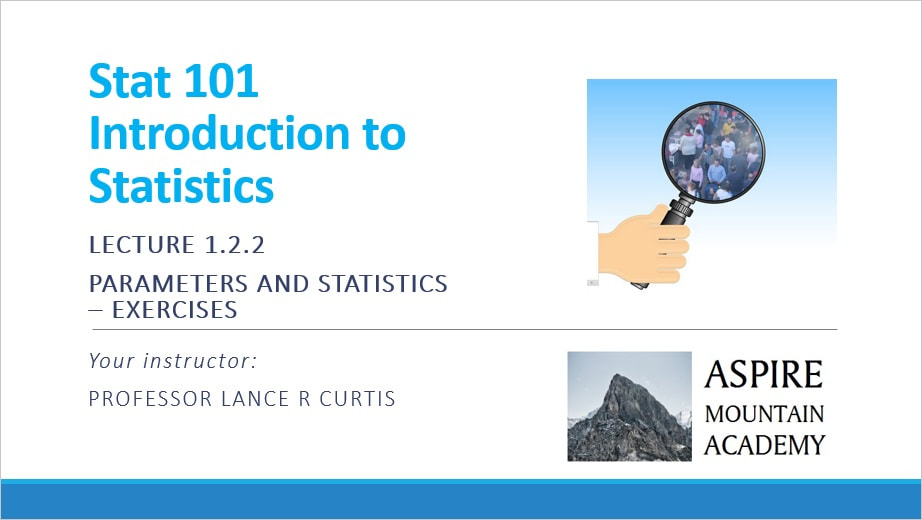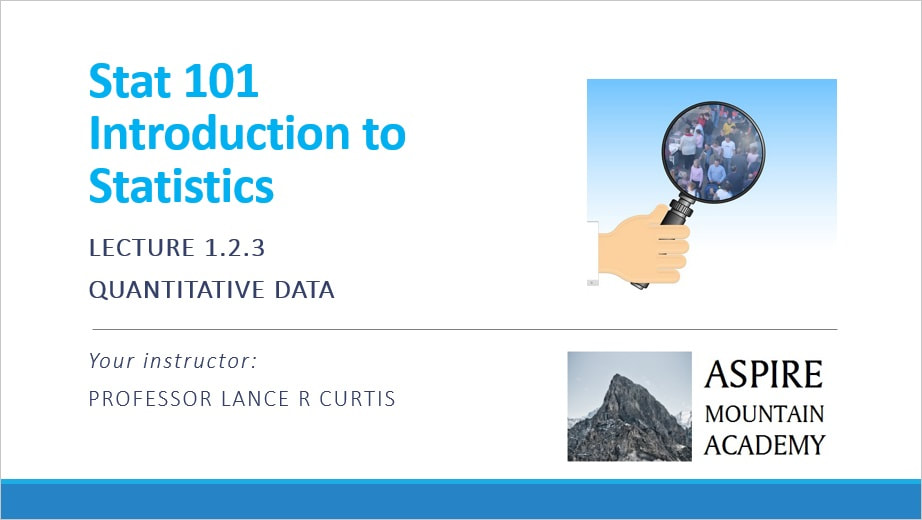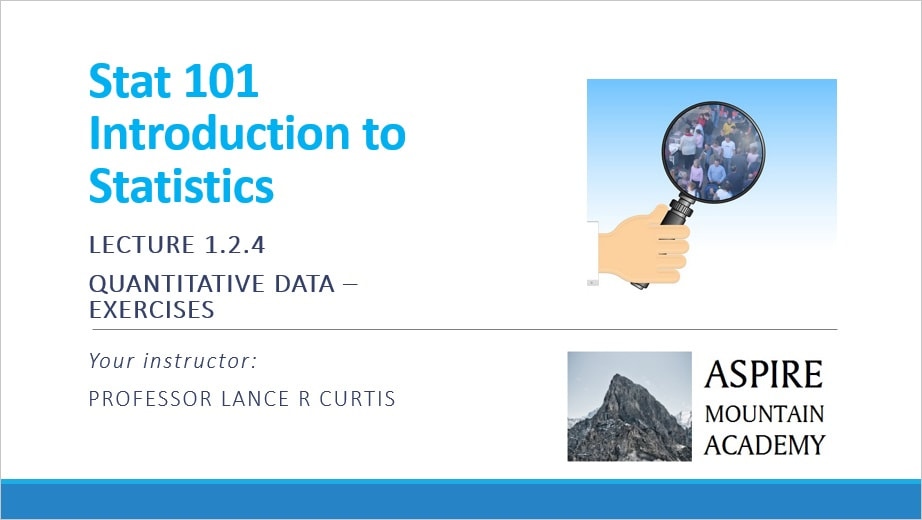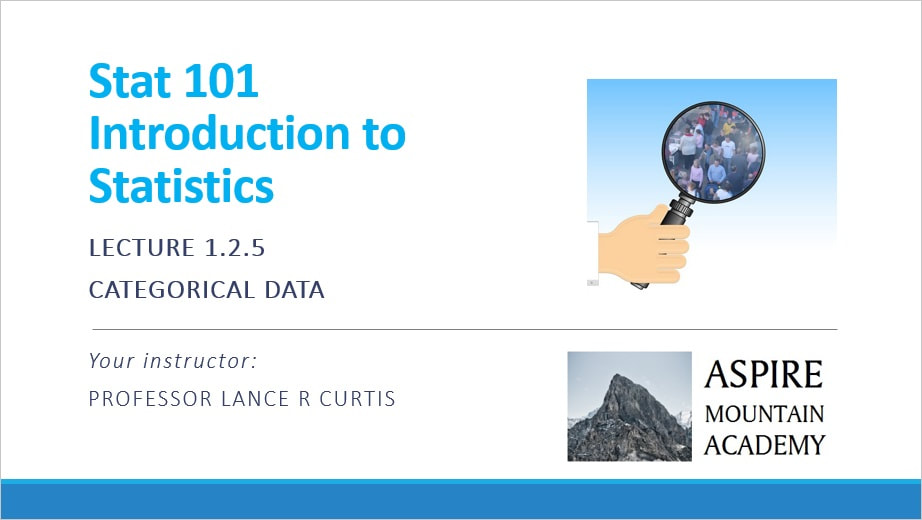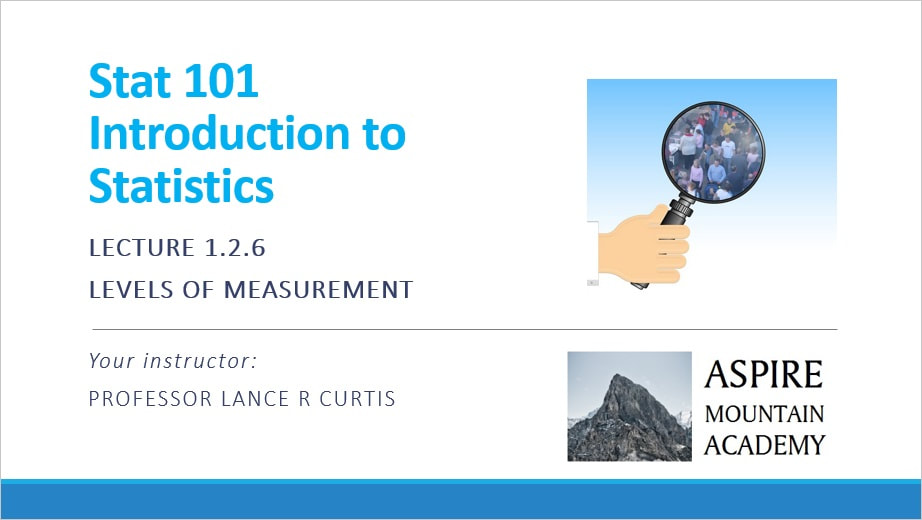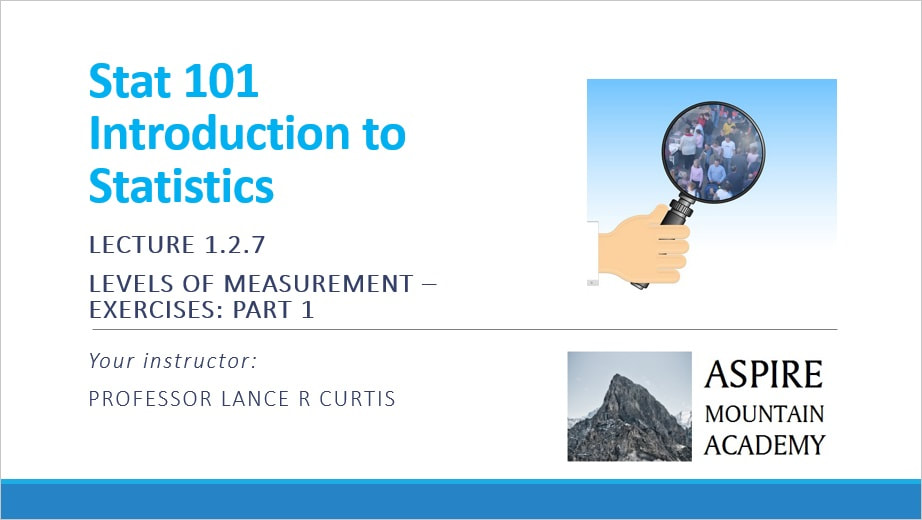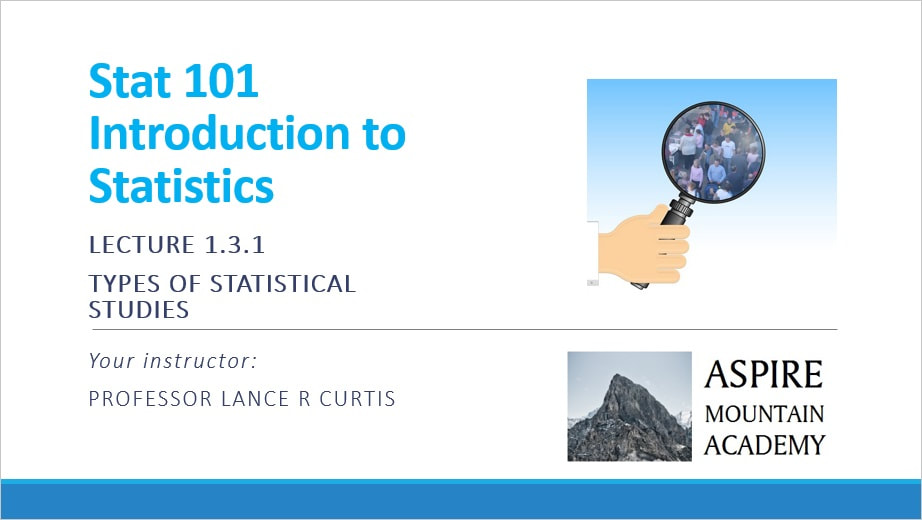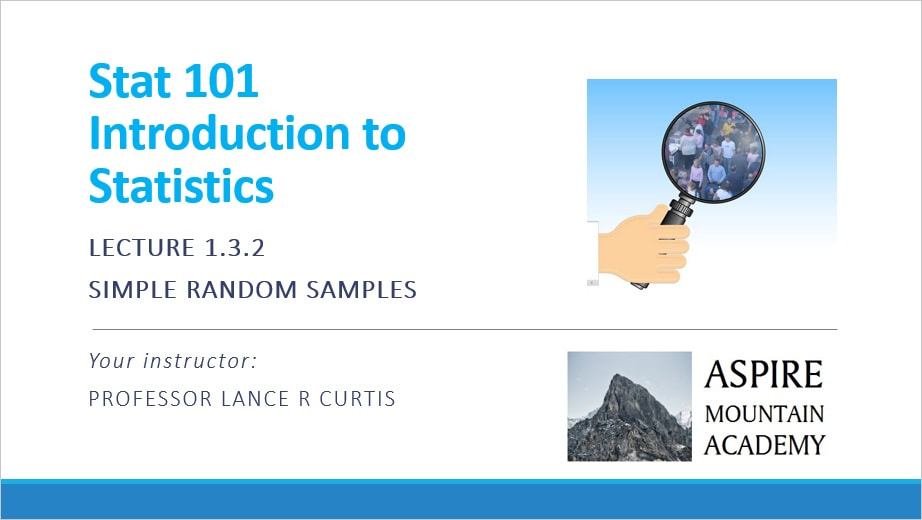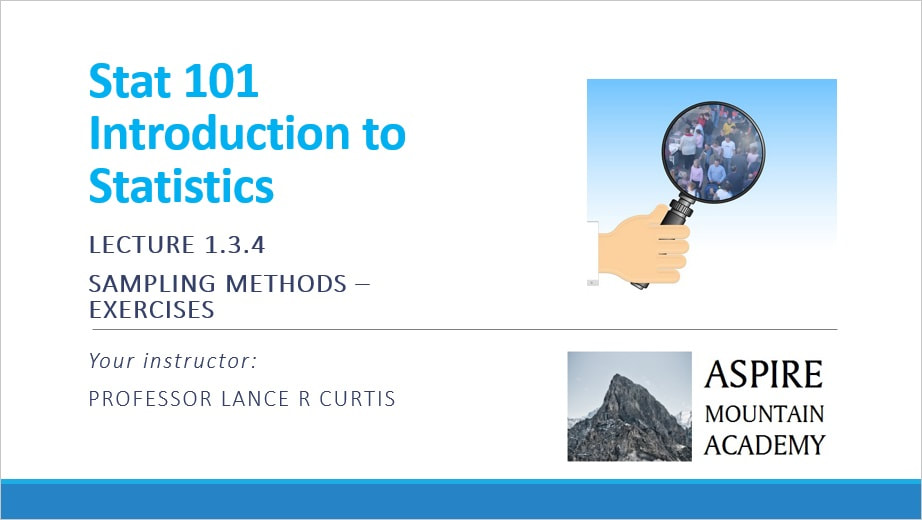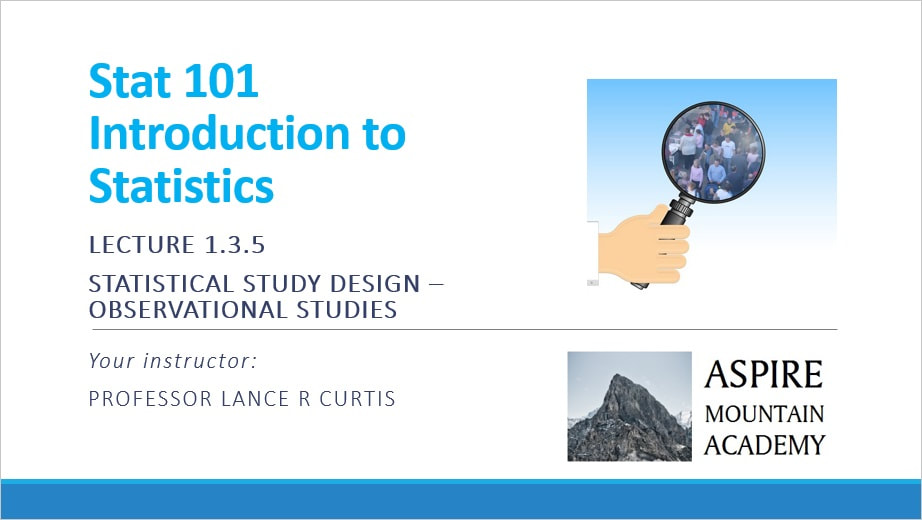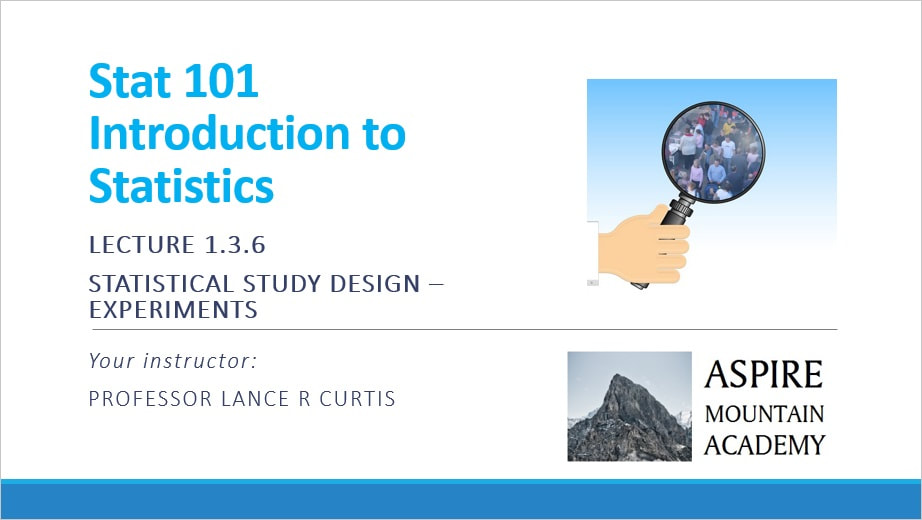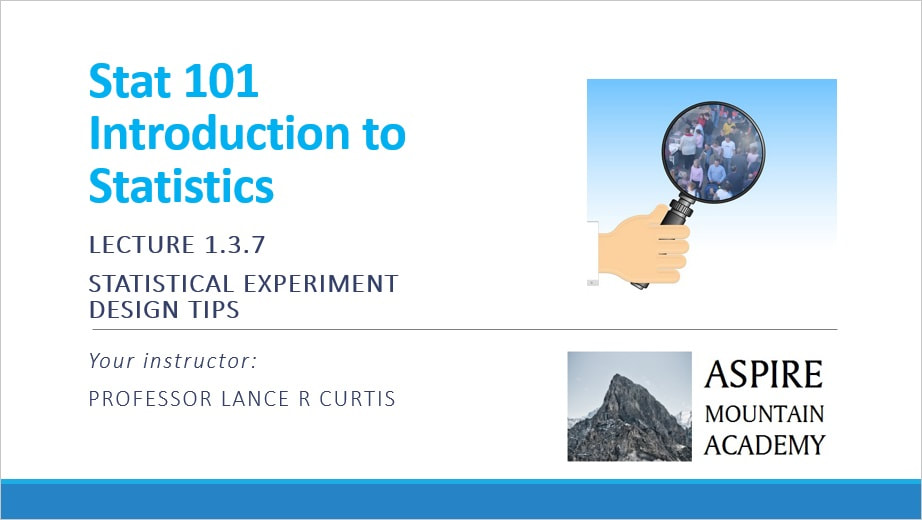The outline below lists all the lectures for Section 1 of the Aspire Mountain Academy course in elementary statistics. Once the lecture video becomes available, the title will become a link to the video and a brief description will appear below the title.
Section 1 - Introduction to Statistics
Section 1.1 Statistics and Critical Thinking
|
Mini-Lecture Video 1.1.4: Potential Pitfalls in Statistics Use – Part 2
This mini-lecture concludes the examination of pitfalls from the previous mini-lecture, including precision and accuracy in numbers and percentages, and provides an activity designed to reinforce learning from this and the previous mini-lecture.
|
Section 1.2 Types of Data
|
Section 1.3 Collecting Sample Data
|
Lecture Video 1.3.5: Statistical Study Design – Observational Studies
This mini-lecture explains the differences between the different types of observational studies (cross-sectional studies, retrospective studies, and prospective studies) and provides a brief activity for students to practice what they learn.
|
More video titles are on the way. Your patience is appreciated.
Stats
|
Company |
|

